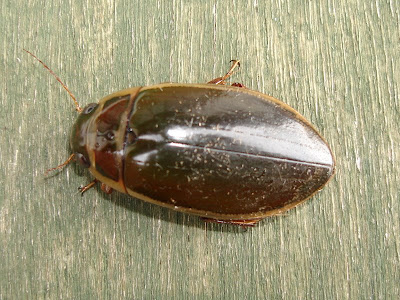
There was a real touch of spring in the morning of Saturday 28th Feb, once the clouds were rolled back. The picture above shows the clouds being pushed off to the south-east and out to sea, leaving a warm and sunny morning. The blue sky only lasted 2 or 3 hours but in that time 3 adders were out basking in the sunshine in their usual spot in the park - an increase of one.
A walk to the Point produced a close view of a red-throated diver close in to the beach and further out in the river Colne a common seal could be seen. Up river there were the usual handful of red-breasted mergansers near Langenhoe Point. No sign of the snow buntings first thing but there was the report of 4 birds seen later in the day. The only waders of interest near the Point were groups of 250 golden plover and 20 ringed plover.
On the grazing fields 300 wigeon were busy feeding although at one point a low-flying aircraft scared off 500 brent geese. Four greylag geese, 24 gadwall, 20 shoveler, 50 teal, 50 mallard, 20 shelduck were some of the wildfowl seen while on the pond there were 16 tufted duck and a pochard. Twenty black-tailed godwits and 2 snipe were noted during the low tide on the fields.
Offshore from West Mersea Martin Cock noted from his boat trip 2 great northern divers, 6 eider and 2 red-throated divers.
 The mild end to Friday provided a good opportunity to set the moth trap running at the country park overnight. Within a couple of minutes of switching the lamp on, there were already some moths fluttering around and the cloudy and still conditions seemed ideal. The moth above is the male dotted border, looking very different to the female in the photograph posted a couple of days ago.
The mild end to Friday provided a good opportunity to set the moth trap running at the country park overnight. Within a couple of minutes of switching the lamp on, there were already some moths fluttering around and the cloudy and still conditions seemed ideal. The moth above is the male dotted border, looking very different to the female in the photograph posted a couple of days ago.
 This richly coloured brown moth is the satellite moth, named after the two tiny "satellite" dots on either side of the big white spot on each wing. Although this widespread moth has been seen at the park before, it strangely wasn't recorded last year.
This richly coloured brown moth is the satellite moth, named after the two tiny "satellite" dots on either side of the big white spot on each wing. Although this widespread moth has been seen at the park before, it strangely wasn't recorded last year.
The only other species of moth noted in the trap were 4 March moths.
The big bug in the trap in the morning that immediately caught the eye was this great diving beetle, pictured below. These big beetles are often attracted to the light at night as they fly around looking for other watercourses.


No comments:
Post a Comment